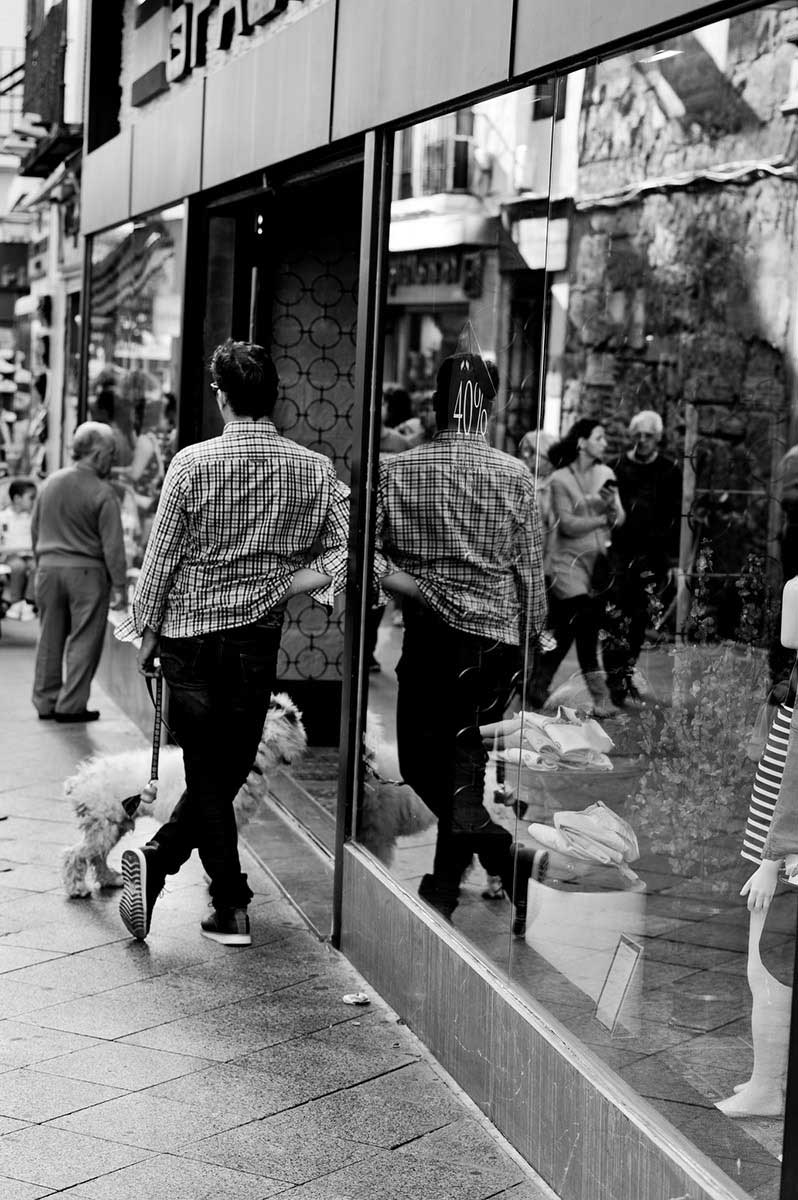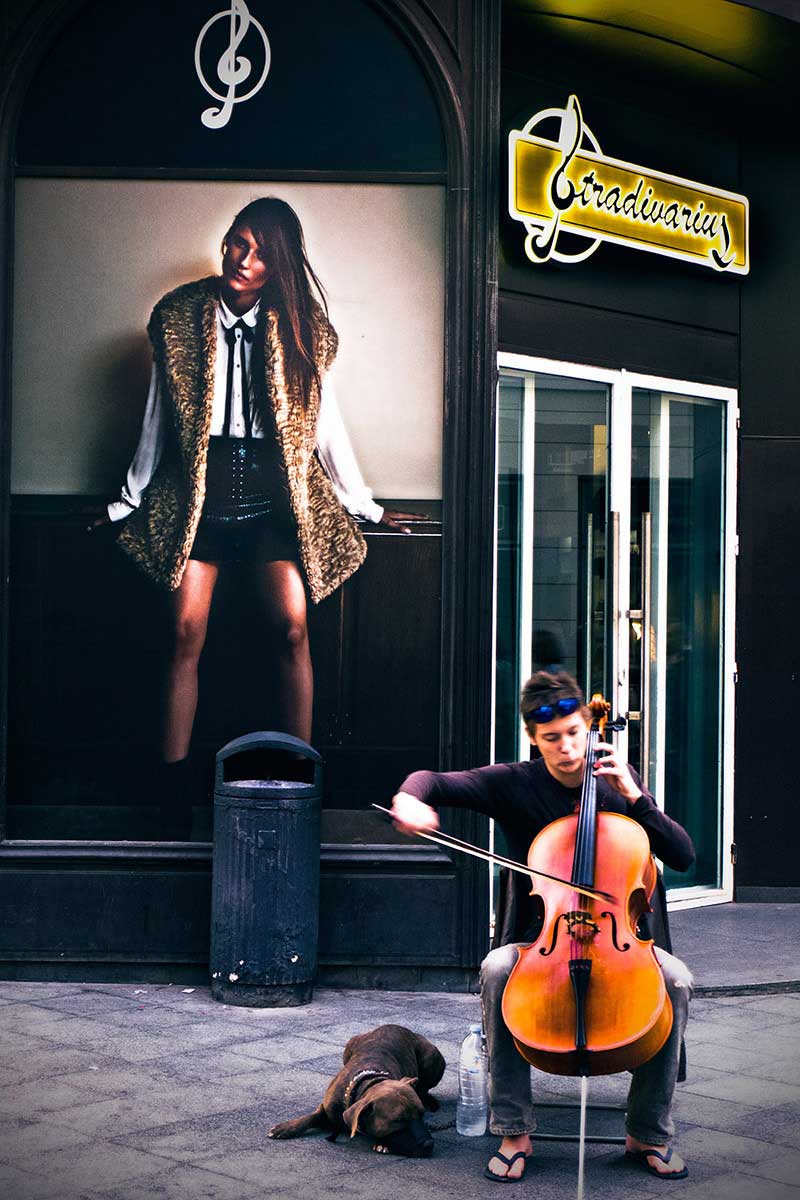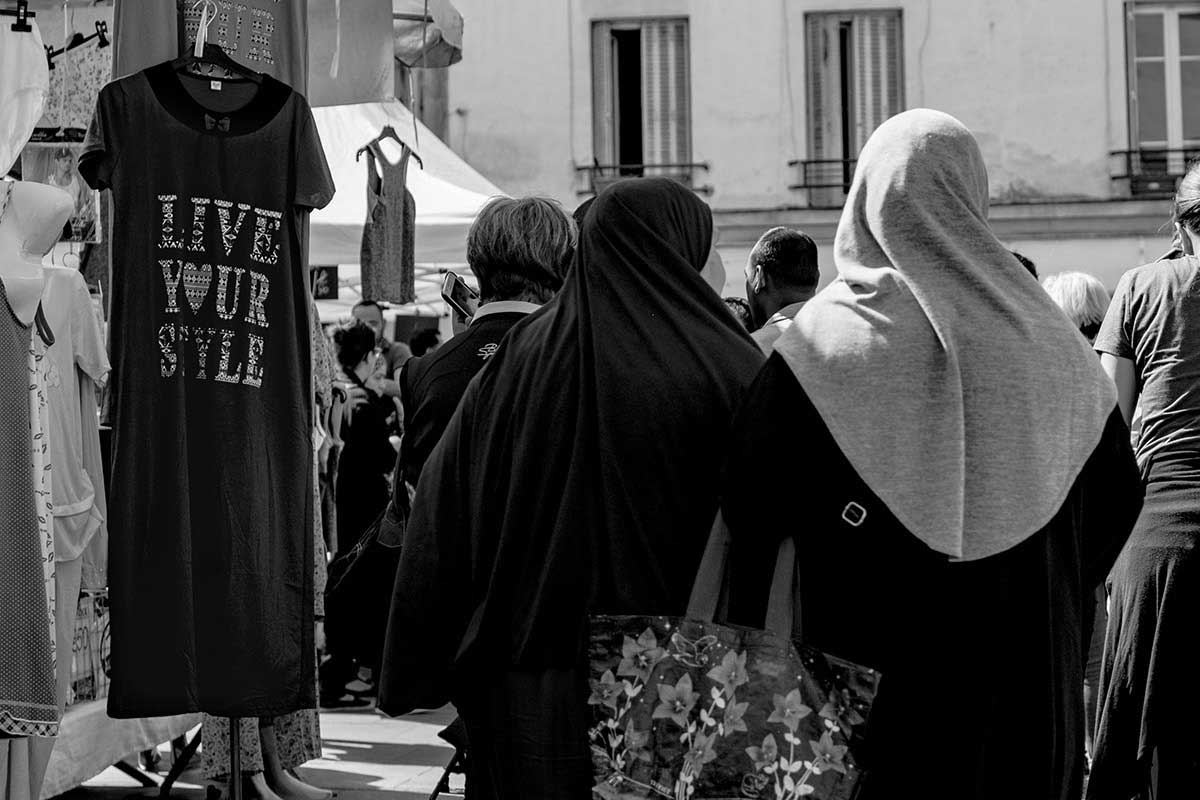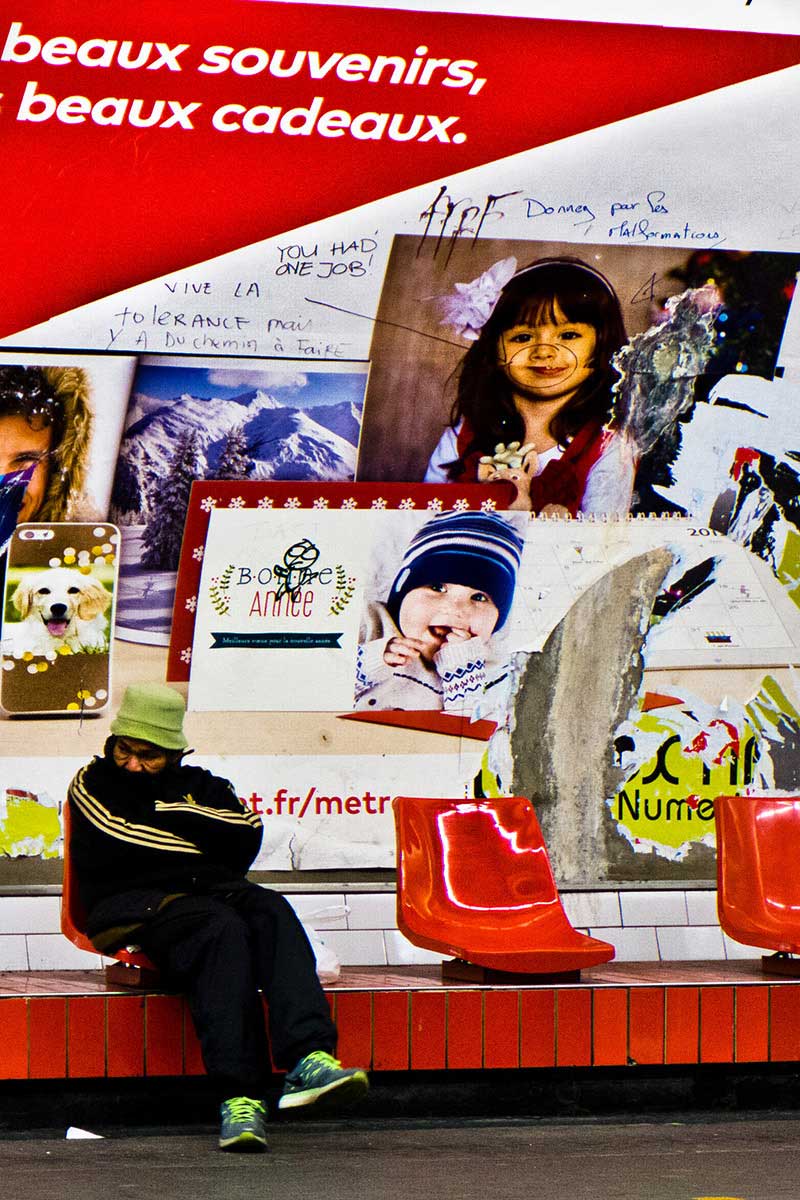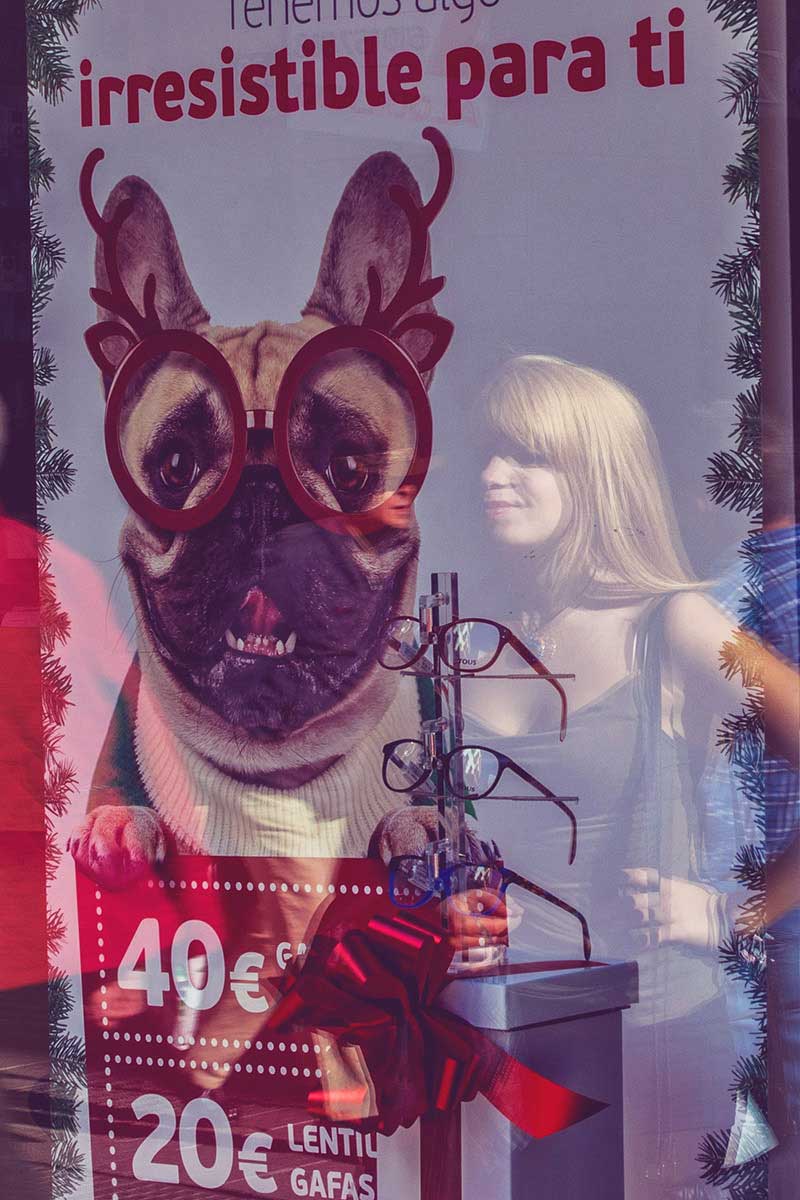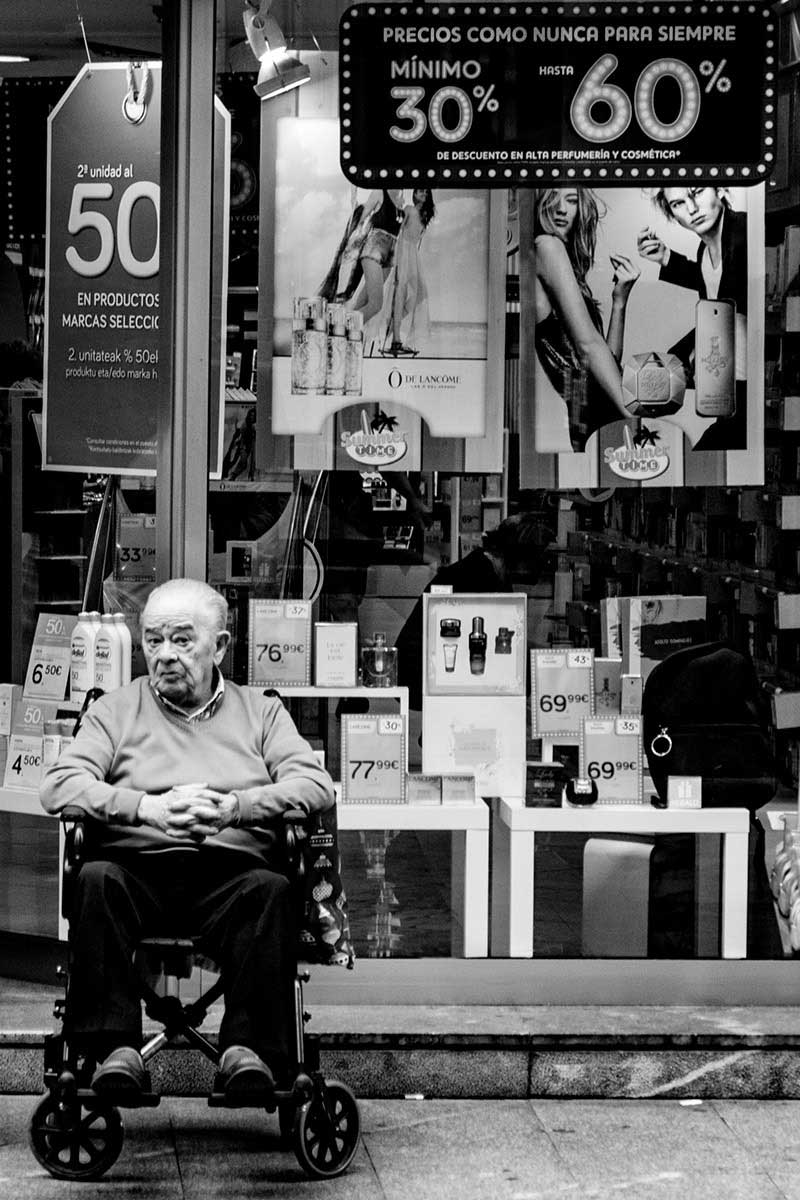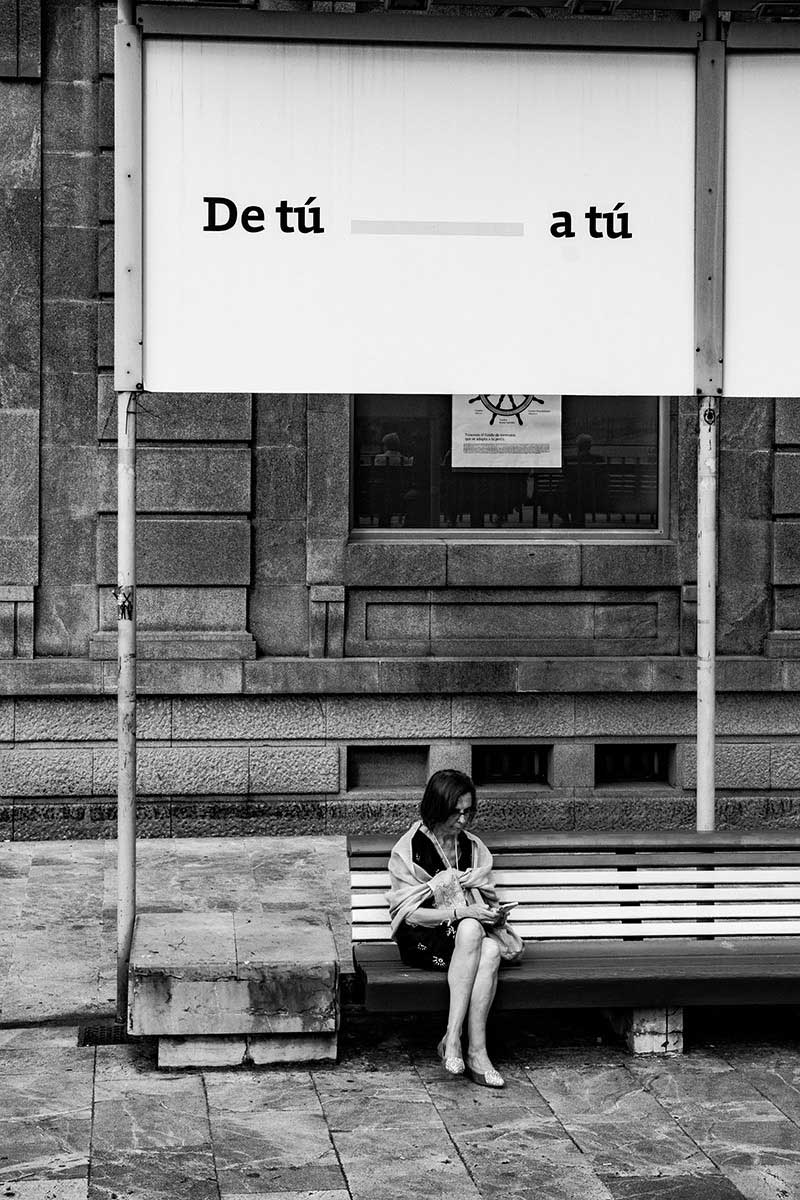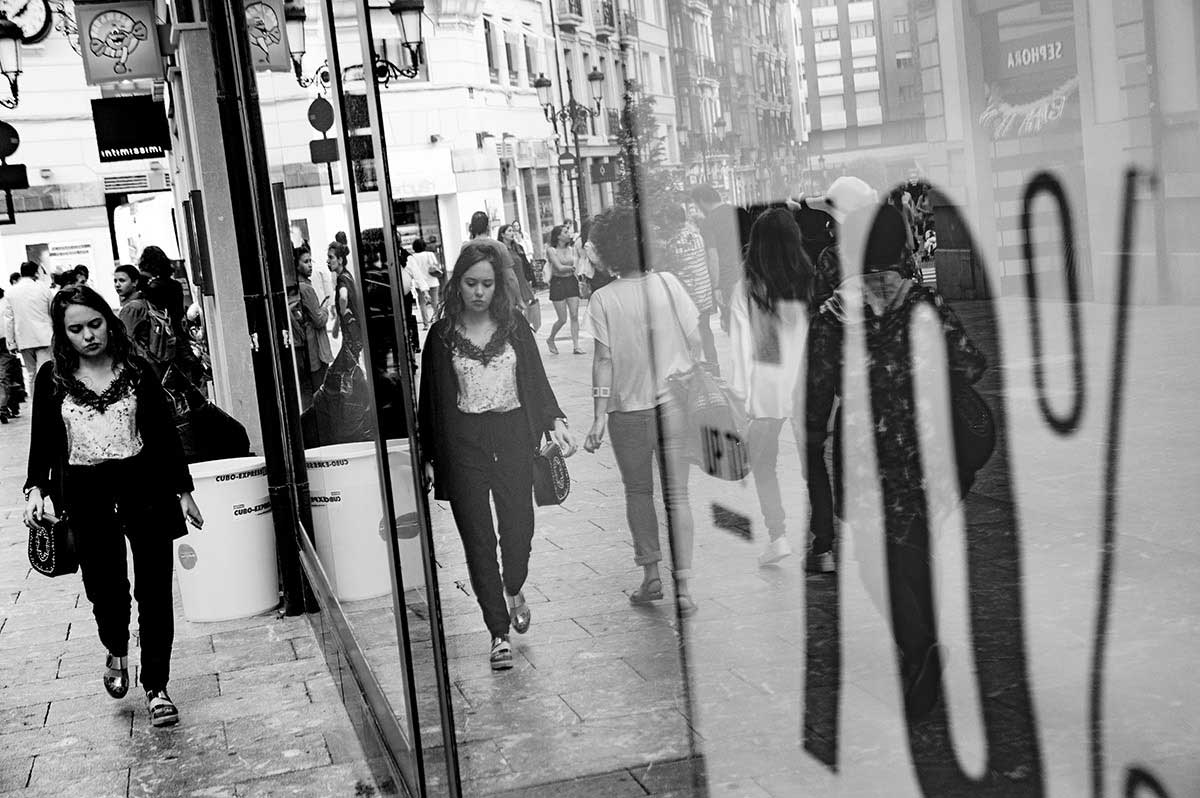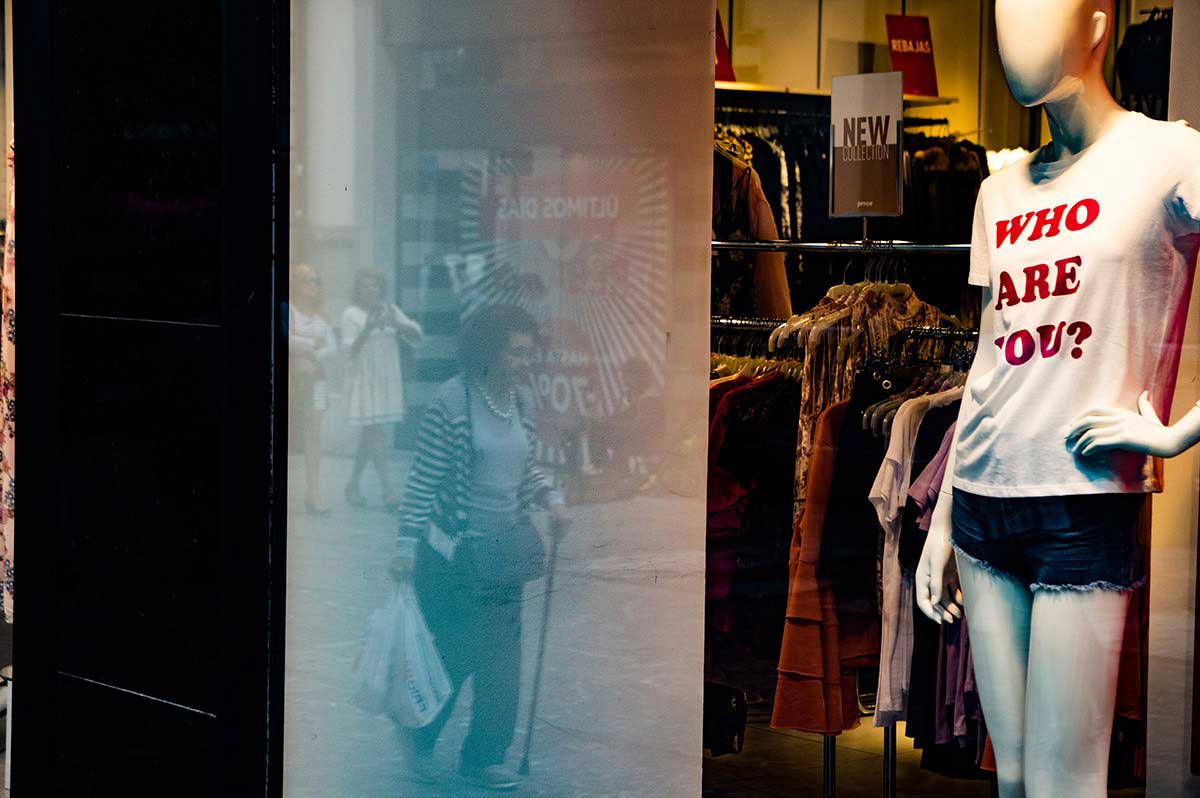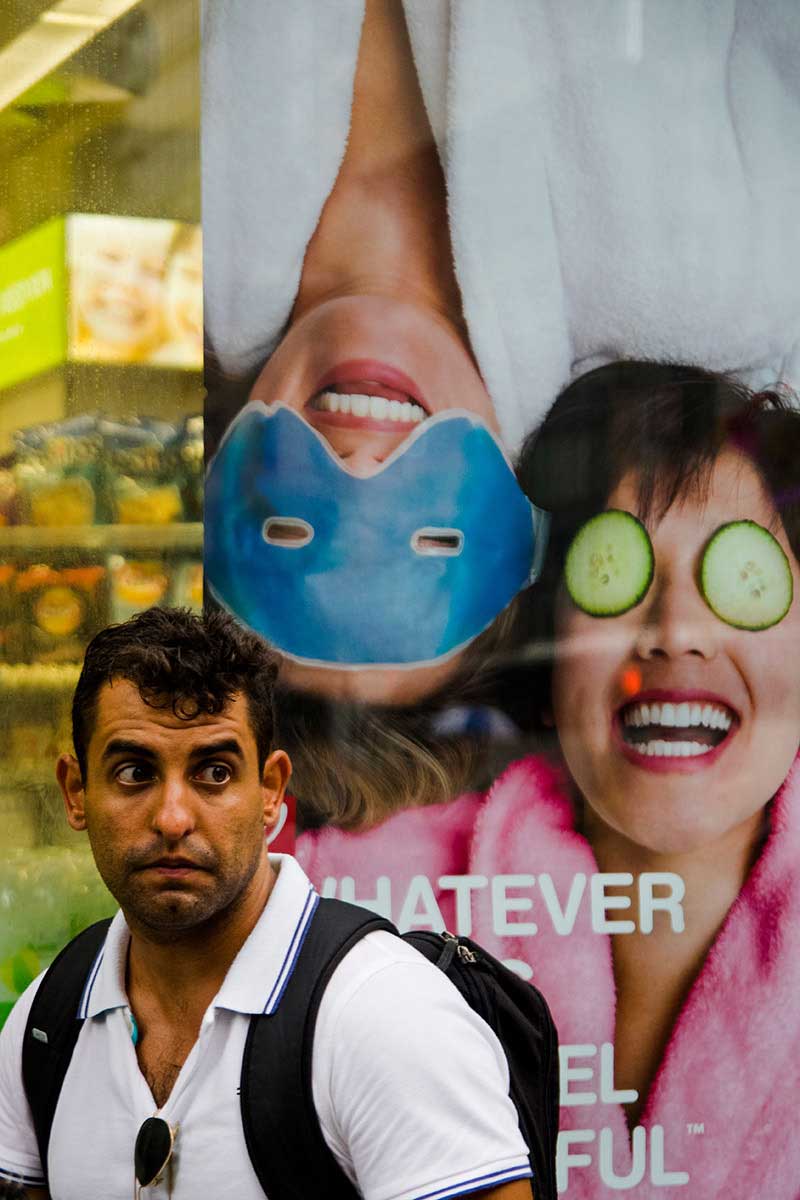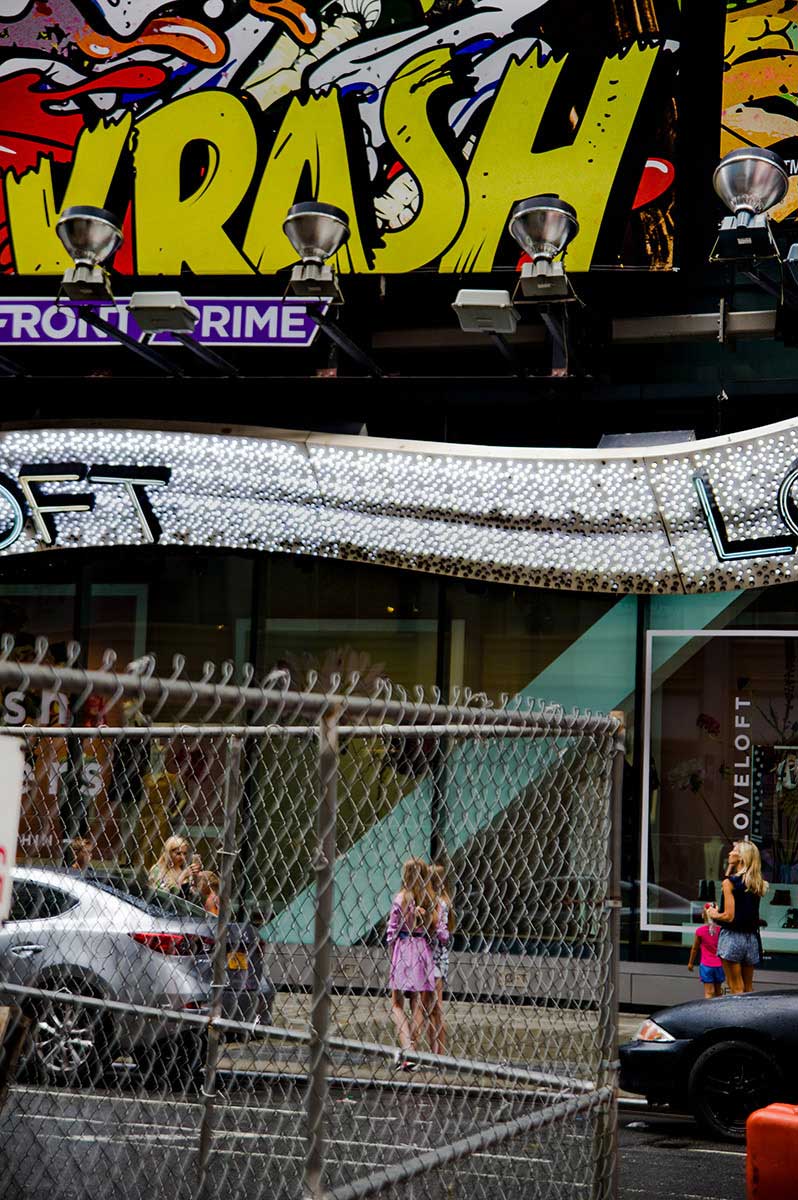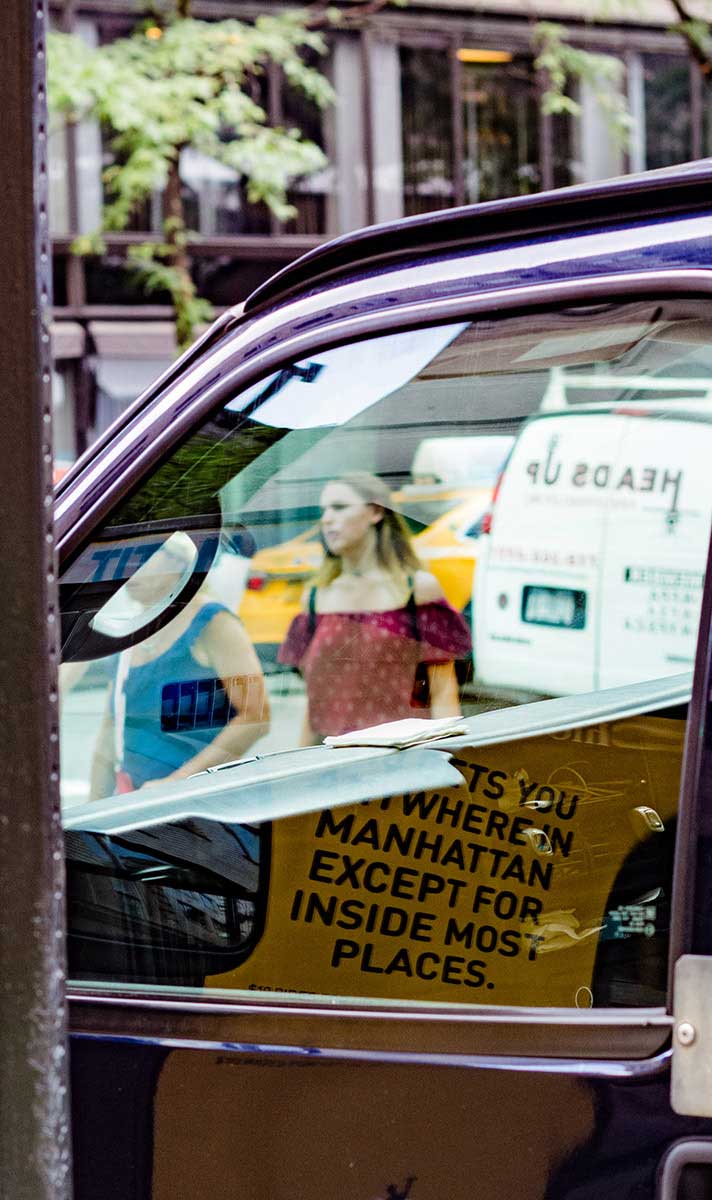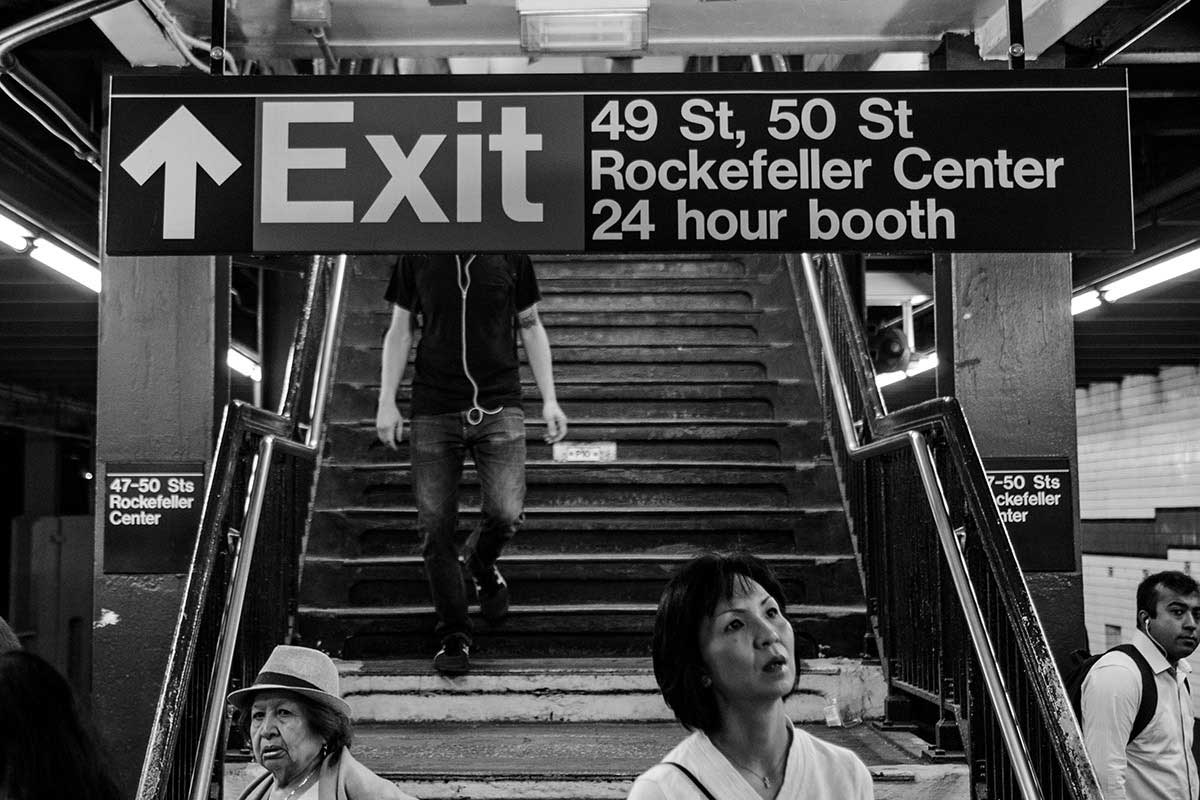From the beginning of photography, there has been a direct relationship between the images being captured and the environment where the scene took place.
Street was a preferred place for Doisneau or Lee Friendlander. However, street has been changing. More and more often we find signs, advertising, signs, street furniture. Many of these posters and advertisements are recent, but others are old and appear as archaeological remains of the economy of time ago.
The project «Just What Is It That Makes Today’s Streets So Different, So Appealing?» Takes its name from the work of a similar name from the British artist Richard Hamilton. He wondered the same about homes, which were beginning to fill with publicity and created an alternative and fantastic world of illusions in cardboard. In our day, that same
world has invaded the streets. When we try to photograph what Cartier Bresson or Leiter saw, we find an alternative world that transforms even the people around.The reflections in showcases provide an uncomfortable reality where human beings are reflected in them as one more product. The sales, the percentages, the own products, make that many times we can’t distinguish the reflected reality of the own reality.
Posters and advertisements can give us an ironic view of the world around them. We live immersed in cities where every corner has a sign above us that tells us something about the places we go. Even the slogans in clothes transforms the vision we offer to the world with contradictory messages that do not always fit what we really think.Photography thus becomes the best way to confront the city we perceive with the one in which we actually live. From Time Square to the streets of Paris, new urban inhabitants have emerged, silent, that are part of photos we make and the new urban soul.
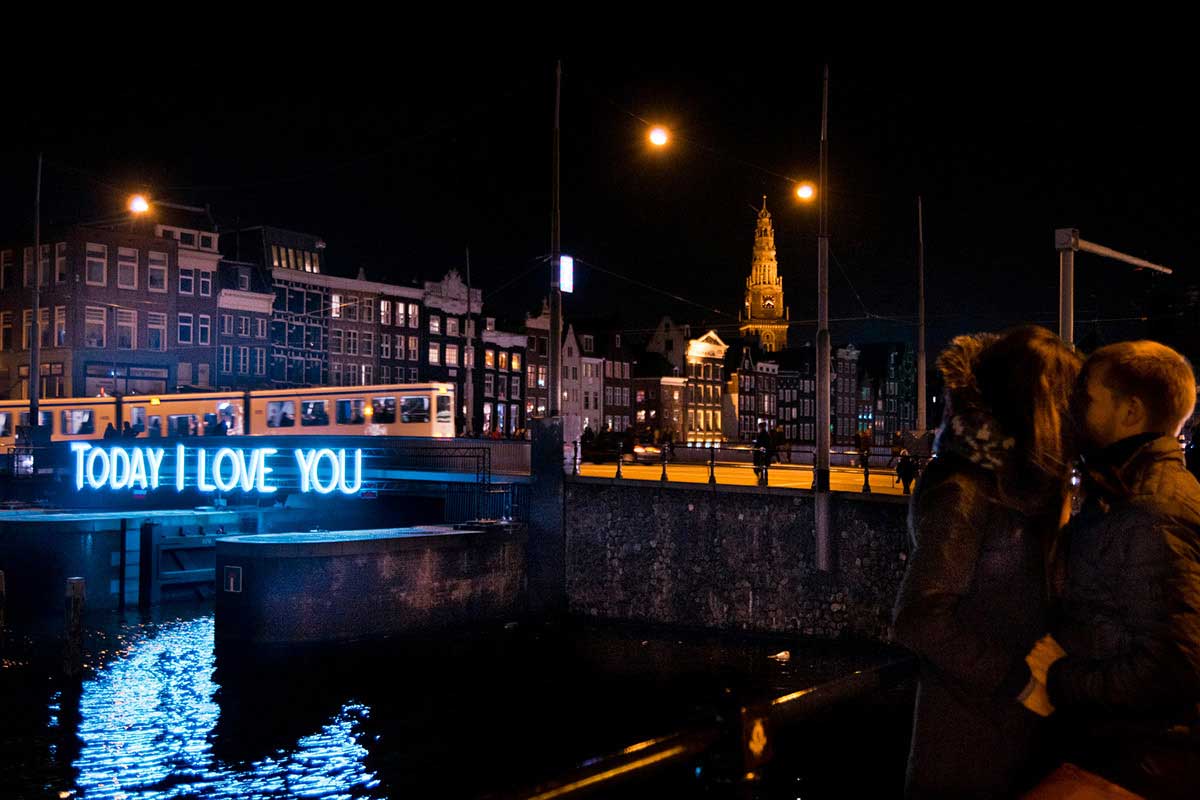
About Aaron Reyes
Aaron Reyes, born in 1981 at Seville (Spain). His first pics were taken with a analogic Pentax P-47 borrowed by his father when he was 11 years old. Since then, he has wanted to explore the world in the streets, influenced by Doisneau, Cartier-Bresson, Saul Leiter and specially Lee Friedlander. All of them have been known in his university studies in History of Art, doing a PhD about the way the emotions and art are related.He has worked as teacher and photographer since 2011 in different ways. As fashion editorial photographer has published with Vogue and always searching a relationship between beauty and streets. For this reason many of his pics and fashion portfolios are in this spaces. Living and working at Paris for a while, there he discovering the importance of the light and the reflexes of showcase in the day by day of the city.
In all of my photographic work, there is a certain prevailing theme which has something to do with light, movement, and atmosphere. I do love playing with rhythms, light, and lines. I often place landscape in the foreground, inside light, and compose space from the running lines. A play of light and shade when light shines in darkness…
My goal in my photographic work isn’t to produce something decorative but just to share a poetic feeling in order to emphasize imagination.
